- Forums
- Knowledge Base
- Customer Service
- FortiGate
- FortiClient
- FortiAP
- FortiAnalyzer
- FortiADC
- FortiAuthenticator
- FortiBridge
- FortiCache
- FortiCarrier
- FortiCASB
- FortiConnect
- FortiConverter
- FortiCNP
- FortiDAST
- FortiDDoS
- FortiDB
- FortiDNS
- FortiDeceptor
- FortiDevSec
- FortiDirector
- FortiEDR
- FortiExtender
- FortiGate Cloud
- FortiGuard
- FortiHypervisor
- FortiInsight
- FortiIsolator
- FortiMail
- FortiManager
- FortiMonitor
- FortiNAC
- FortiNAC-F
- FortiNDR (on-premise)
- FortiNDRCloud
- FortiPAM
- FortiPortal
- FortiProxy
- FortiRecon
- FortiRecorder
- FortiSandbox
- FortiSASE
- FortiScan
- FortiSIEM
- FortiSOAR
- FortiSwitch
- FortiTester
- FortiToken
- FortiVoice
- FortiWAN
- FortiWeb
- Wireless Controller
- RMA Information and Announcements
- FortiCloud Products
- ZTNA
- 4D Documents
- Customer Service
- Community Groups
- Blogs
- Fortinet Community
- Knowledge Base
- FortiGate
- Technial Tip: Illegal HTTP request method
- Subscribe to RSS Feed
- Mark as New
- Mark as Read
- Bookmark
- Subscribe
- Printer Friendly Page
- Report Inappropriate Content
Description
This article explains the illegal HTTP request method and the steps to block it.
Solution
As per the FortiGate, the methods specified below are treated as a legal HTTP request method.
GET, PUT, CONNECT, OPTIONS, OTHERS, POST, HEAD, TRACE, DELETE.
Enable the 'Illegal HTTP Request Method' on the FortiGate GUI to block these attacks.
1. Go to System > Feature Visibility & enable Web Application firewall:
2. Edit the Web Application firewall profile & enable the 'Illegal HTTP Request Method'
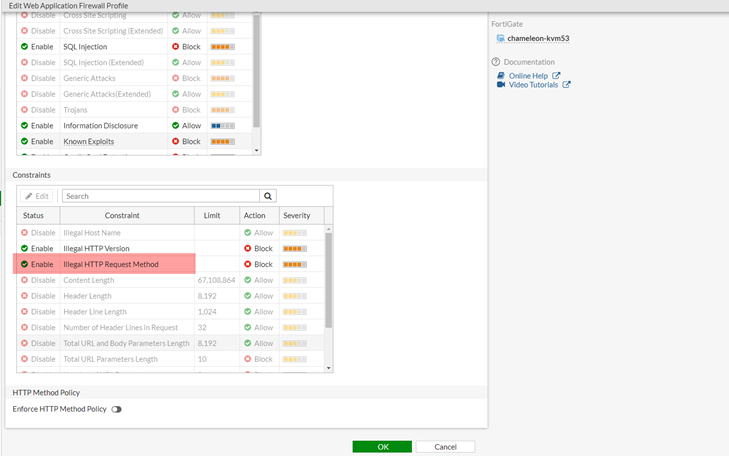
Illegal HTTP methods:
1) MKCOL Method.
The MKCOL method allows authors to create collection on the server at a specified URL.
A collection means a logical or physical grouping of resources in a hierarchy.
The most simple example of a collection is a directory.
Collections are also resources, who can contain other collections as well.
The following example uses the MKCOL method to create a directory on the server side called 'test'.
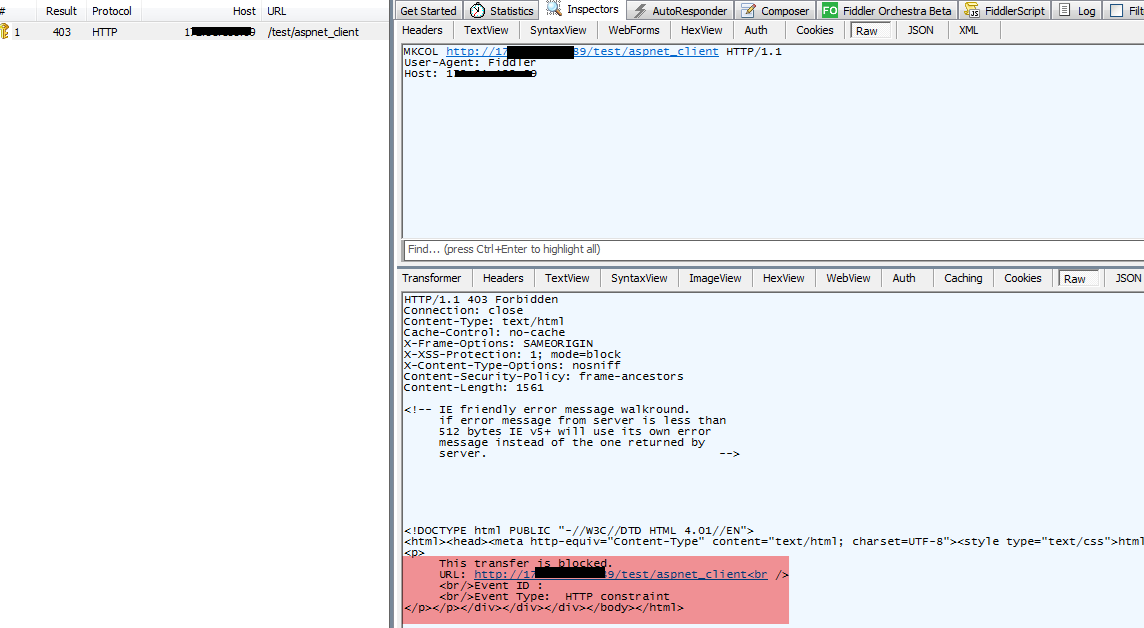
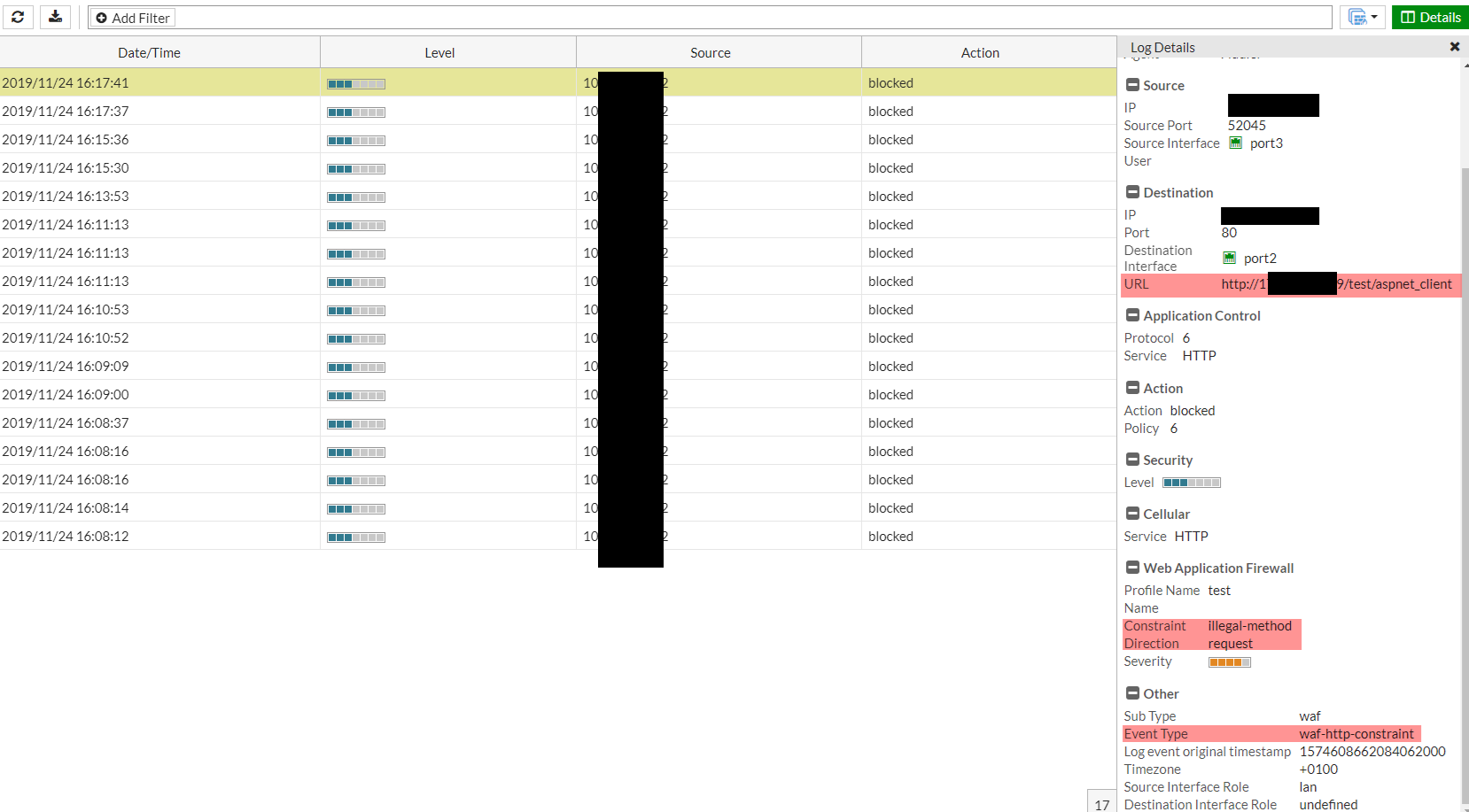
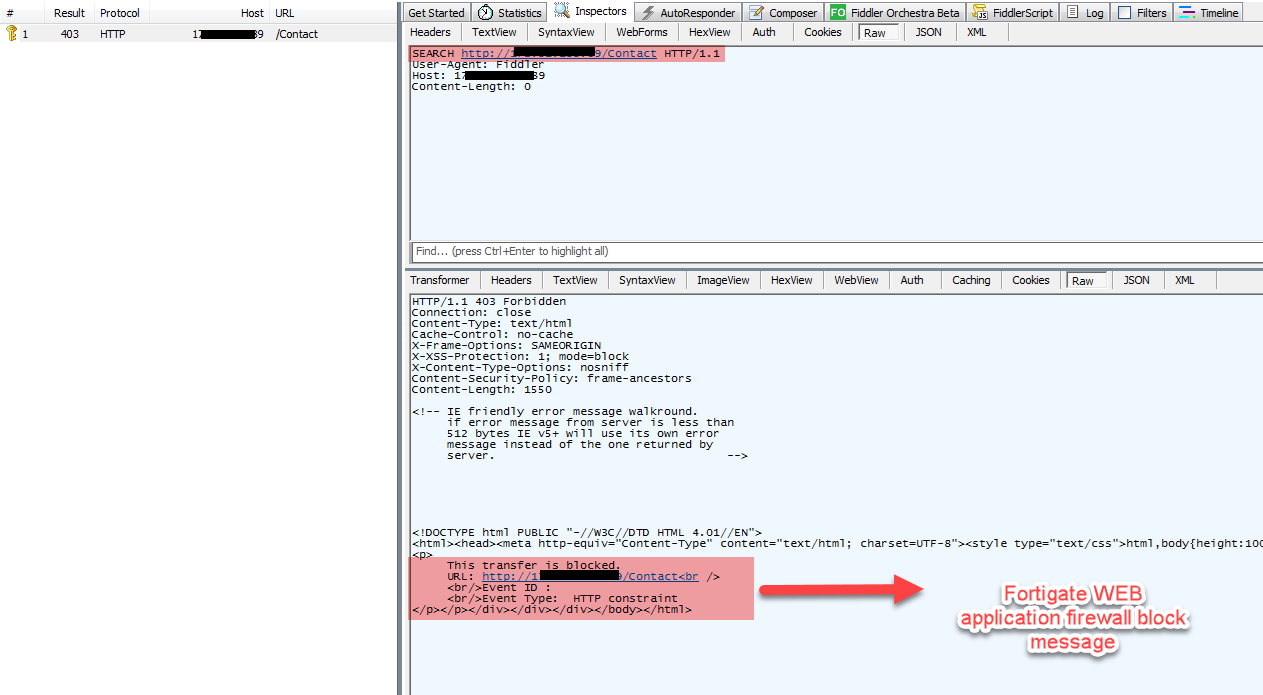
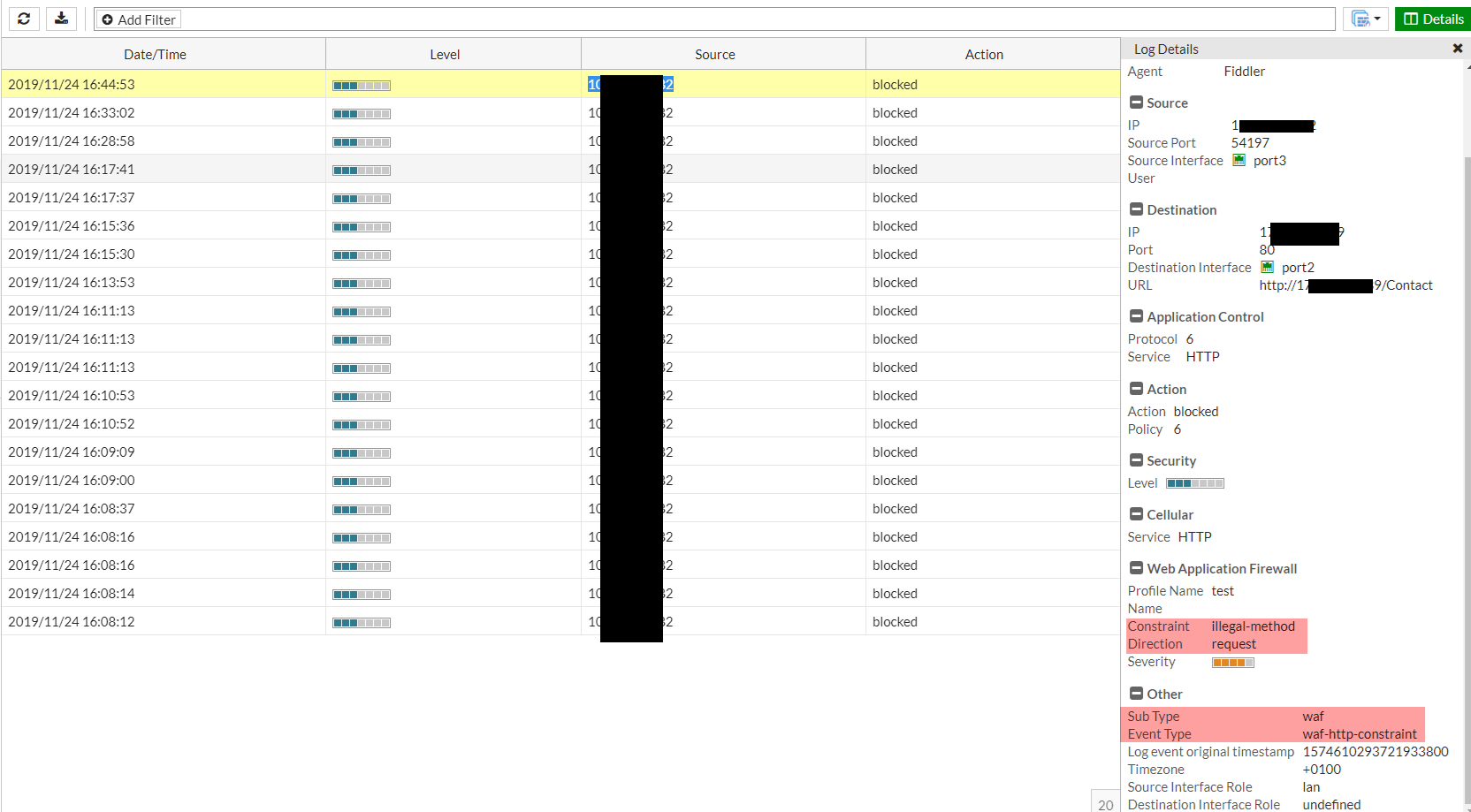
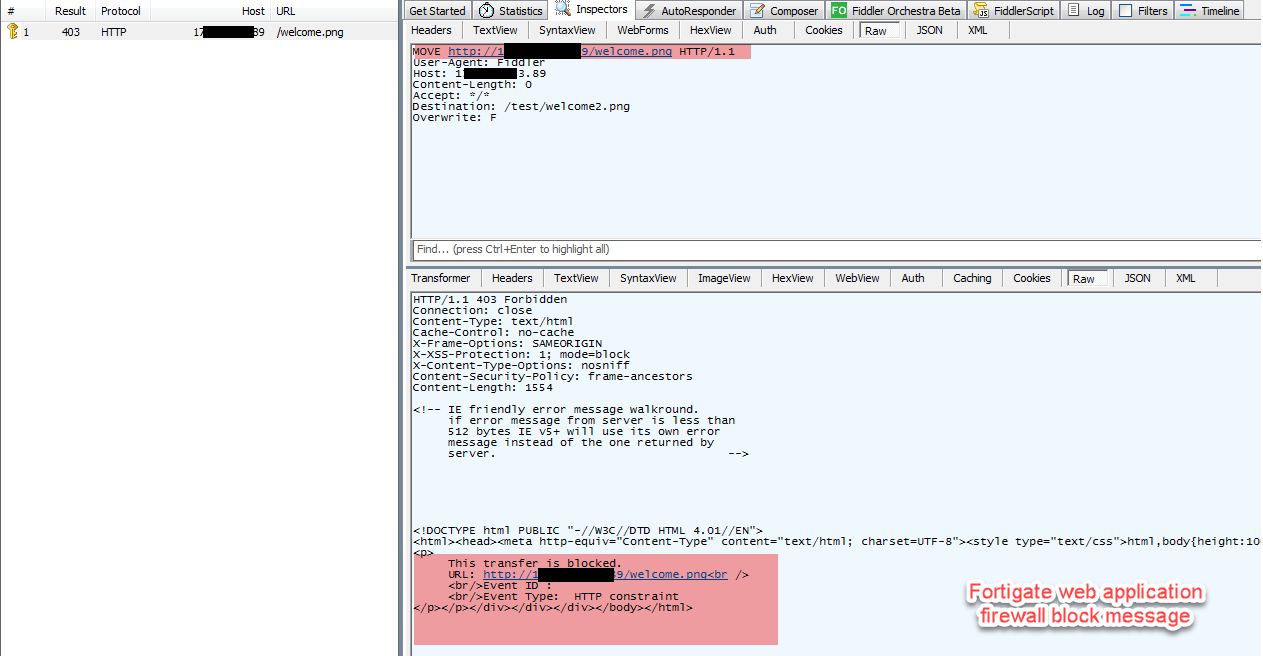
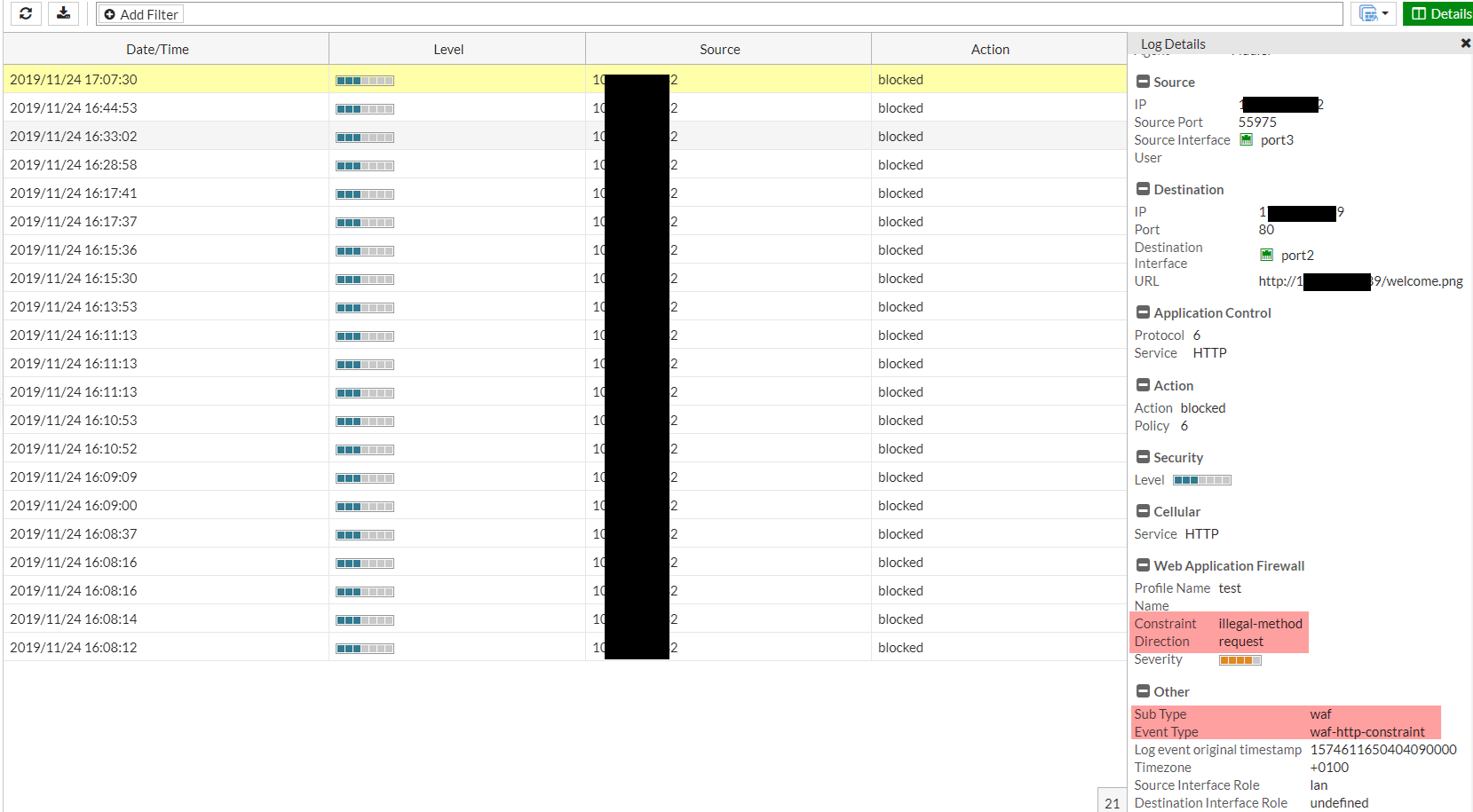
The Fortinet Security Fabric brings together the concepts of convergence and consolidation to provide comprehensive cybersecurity protection for all users, devices, and applications and across all network edges.
Copyright 2024 Fortinet, Inc. All Rights Reserved.
